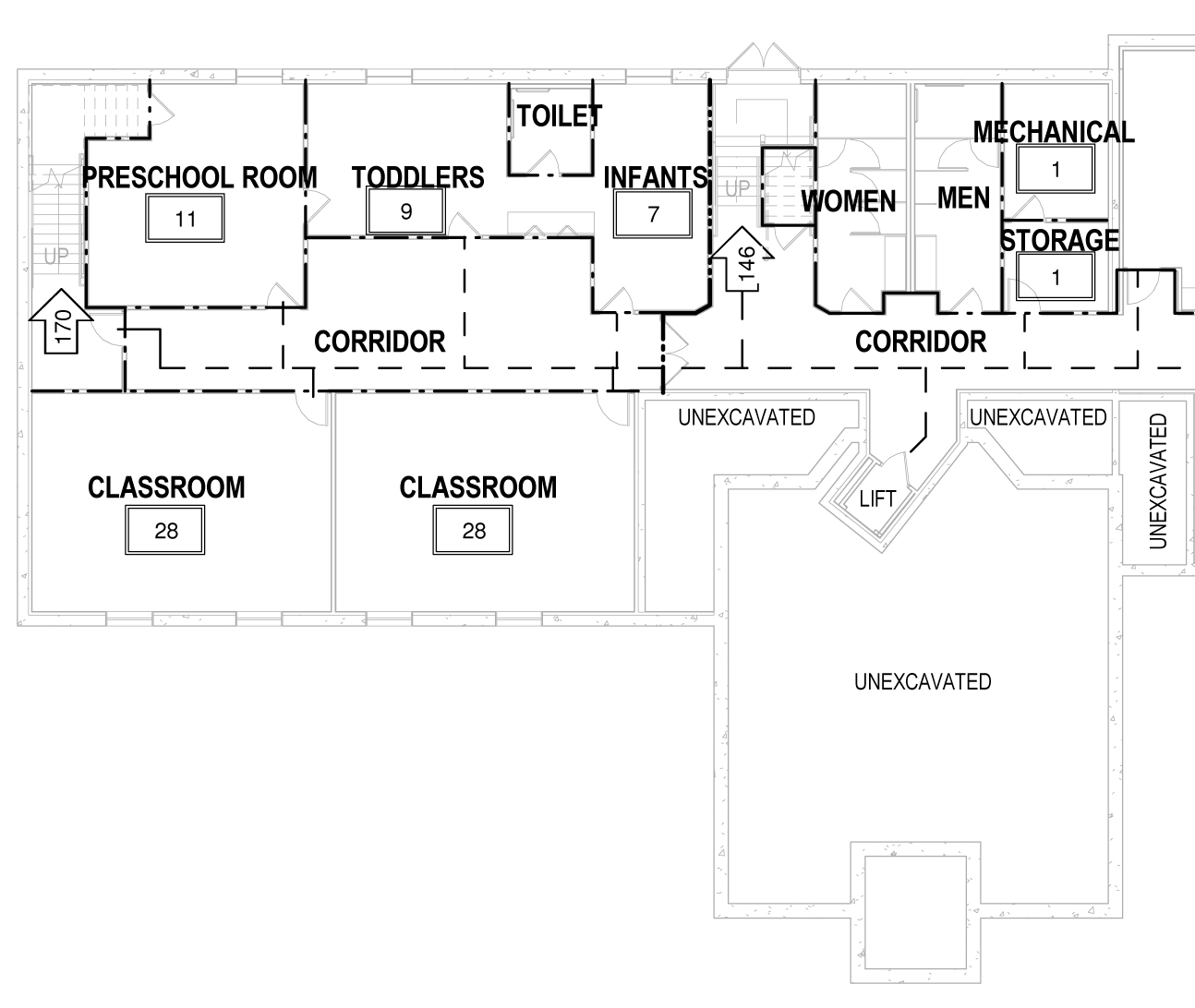This is the final article in our four-part series detailing the church building process.
The first step: Assembling Your Team: The Key to Successful Church Construction
The second: Assessing the Feasibility of Your Church Construction Goal
The third: Church Preconstruction Explained: Part 1
Once you’ve established funds and/or financing, your organization can move forward with the final phases of preconstruction: design development, construction documents, bidding, and a construction contract.
Design Development and Construction Documents
In these last two stages of design and drawing, many of the same ideas are revisited and refined with more detail, often to 50% in design development and 90% in construction documents. Here’s an example showing a portion of a 50% design development document:

The building committee and partners will need to consider differences between the results of fundraising and/or financing and the schematic design budget estimate. Ministry needs may also need to be re-assessed. If, for example, a church concluded schematic design in 2019 and completed fundraising in 2020, the following design changes may have been required:
- COVID-19 precaution accommodations or new, accessible programming that will continue
- Expanded education space to accommodate increased enrollment through Wisconsin Private School Choice Programs.
Each time the architectural design is updated, the contractor refines the budget to ensure it remains within the goal.
Value Engineering
The NCI-Roberts “bronze silver gold” process offers churches choice and cost control during finish selections, which can have significant impact on the overall budget. This is one example of value engineering, a key part of preconstruction.
Value engineering is a systematic approach resulting in reduced cost without sacrificing functionality or other goals. Subcontractors can be involved in this process if specific expertise is needed. Another common consideration is volunteer labor provided by the congregation.
Bidding and Construction Contract
When construction documents are complete, bidding is completed, to inform a final not-to-exceed sum. When a contractor is involved in preconstruction, through a design-build process, there are often fewer surprises at this stage.
The general contractor acts as the bidding agent, sending construction documents to multiple subcontractors in each work division (for example, plumbing or electrical). This introduces competition and opportunity for frugality, as the lowest bid in each division is often chosen. However, other factors are important to consider. Bid results can be reviewed by the general contractor and the owner together, offering transparency.
It’s also helpful to understand contractor fees and  terminology as the construction contract is finalized. Key terms include:
terminology as the construction contract is finalized. Key terms include:
- Overhead: non-jobsite labor and other expenses. This differs from profit.
- General conditions: onsite personnel and materials like fencing, dumpsters, signage, job trailers and more.
If a church pursues a design-bid-build process, where the contractor bids a design it wasn’t involved in developing, these terms are even more important to understand to compare apples to apples.
Ready to get started?
Contact our team! We would love to learn about your expansion, answer any questions you have at this stage, share more information about our process, and more.